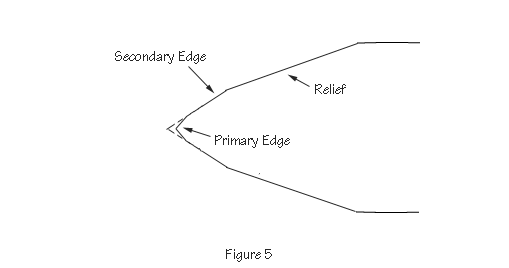I've just finished reading The Razor Edge Book of Sharpening and all through it the author supports grinding a secondary edge in a desired angle, followed by grinding the primary edge in a larger angle.
This is a bit counter-intuitive to me since increasing the angle of the first grinding makes the edge less sharp. Also, most YouTube videos I've watched on knife sharpening do not mention a second grinding phase; yet the book still claims this is the most common grinding.
I couldn't find anything on it in Google while searching the term double-edging.
What exactly are the trade-offs between having one edge or two (see image) ? I am mostly interested in knives, but if an answer is relevant to other tools that would be fine.
Thanks in advance.

Edit: Sorry for not being clear. Added a proper picture for clarification. In the book he uses this grind on a sheath knife where he puts an angle guide at the furthermost part of the spine to grind a relief angle (primary in picture), and then he moves the angle guide a small amount towards the edge and grinds the actual cutting edge (secondary in picture).
This is a bit counter-intuitive to me since increasing the angle of the first grinding makes the edge less sharp. Also, most YouTube videos I've watched on knife sharpening do not mention a second grinding phase; yet the book still claims this is the most common grinding.
I couldn't find anything on it in Google while searching the term double-edging.
What exactly are the trade-offs between having one edge or two (see image) ? I am mostly interested in knives, but if an answer is relevant to other tools that would be fine.
Thanks in advance.

Edit: Sorry for not being clear. Added a proper picture for clarification. In the book he uses this grind on a sheath knife where he puts an angle guide at the furthermost part of the spine to grind a relief angle (primary in picture), and then he moves the angle guide a small amount towards the edge and grinds the actual cutting edge (secondary in picture).
Last edited:




